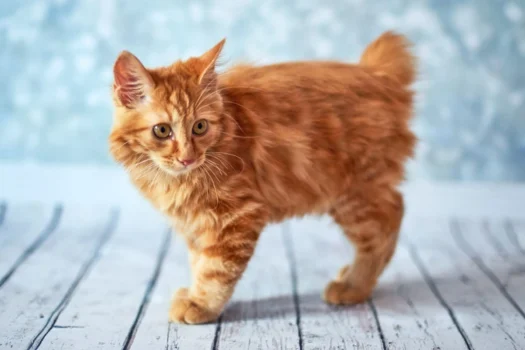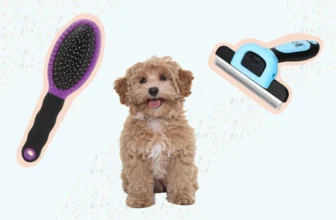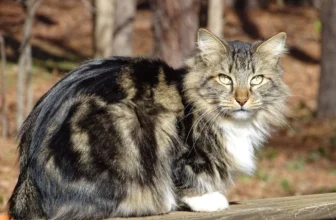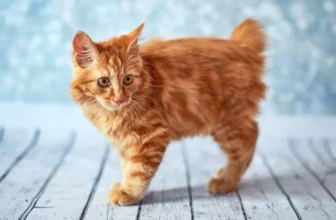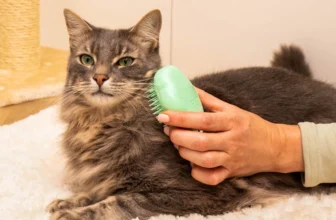As pet owners, we always want to ensure that our American Bobtails are in good health. While eye problems may not be the first thing that comes to mind, they can be quite common in our feline friends. Knowing when to take your American Bobtail to the vet for eye problems can be tricky, especially if you’re unsure of what to look for. In this article, we’ll explore some of the most common eye problems in American Bobtails and when you should schedule an appointment with your vet. We’ll also touch on what to expect during a visit, treatment options, and preventive measures you can take to keep your furry friend’s eyes healthy. Let’s dive in!
Common Eye Problems in American Bobtails
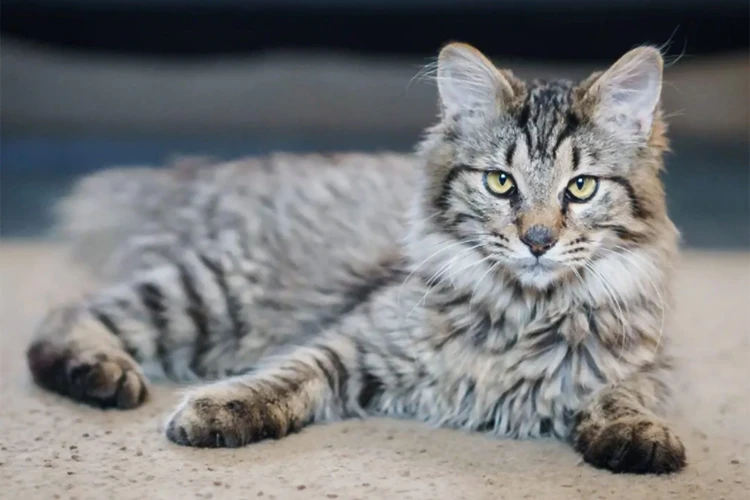
The eyes are sensitive organs that play an essential role in the daily lives of American Bobtails. However, they are also vulnerable to a range of common eye problems that can cause discomfort and potentially put their vision at risk. Many of these eye problems can be prevented or effectively treated when addressed early on. In this section, we will highlight some of the most frequent eye problems American Bobtails may experience, as well as some useful tips on how to prevent and handle them. For more information on keeping your American Bobtail’s eyes clean, see our article on American Bobtail eye cleaning.
Conjunctivitis
Conjunctivitis, also known as pink eye, is a common eye problem that affects American Bobtails. It is a condition where the conjunctiva, the membrane that lines the eyelids and covers the white part of the eye, becomes inflamed. There are several causes of conjunctivitis, including bacterial or viral infections, allergies, or irritants like dust and smoke.
Symptoms: The most common symptoms of conjunctivitis are redness, swelling, and a discharge from the eye. The cat may also blink or rub their eyes frequently.
Treatment: Treatment for conjunctivitis depends on the cause. If it is caused by a bacterial infection, the vet may prescribe antibiotics, while antiviral medication may be given for viral infections. If the conjunctivitis is caused by allergies or irritants, the vet may recommend eye drops, and in severe cases, steroids.
Prevention: Preventive measures for conjunctivitis include keeping the American Bobtail’s eyes clean and free of irritants. Regular eye cleaning practices can help to prevent infections and eye problems. It is also important to practice good grooming habits, including regular baths and keeping the fur around their eyes trimmed.
It is important to note that if your Bobtail exhibits symptoms of conjunctivitis, it is best to take them to the vet as soon as possible to prevent the condition from worsening. Delaying the visit to the vet can lead to complications such as corneal ulcers or blindness.
For more information on how to clean American Bobtail eyes and prevent eye infections, check out our article on cleaning and preventing eye infections in American Bobtails.
Corneal Ulcers
Corneal ulcers are open sores on the surface of the cornea that can be painful and cause discomfort to American Bobtails. These ulcers can occur due to scratches or trauma to the cornea, bacterial or viral infections, or foreign objects that may have penetrated the eye. If left untreated, corneal ulcers can lead to loss of vision or permanent damage to the eye.
Some common symptoms of corneal ulcers in American Bobtails include squinting, tearing, and redness in the eye. Your cat may also rub their eye against objects or paw at their face due to the discomfort. It is important to mention that corneal ulcers can develop rapidly, so it is essential to schedule an appointment with your vet as soon as possible if you notice any of these symptoms.
At the vet’s office, the veterinarian will perform several tests to determine whether the corneal ulcer is superficial or deep. These tests include a fluorescein stain test and a slit-lamp examination. In severe cases, your veterinarian may also perform a culture and sensitivity test to identify the root cause of the infection.
If your American Bobtail is diagnosed with a corneal ulcer, the veterinarian will recommend immediate treatment to prevent any further damage to their vision. Treatment for corneal ulcers typically includes antibiotic or antifungal eye drops to prevent secondary infections that may occur in the ulcerated area. Your veterinarian may also prescribe pain relievers to help your cat feel more comfortable during the healing process. It is important to follow all of your veterinarian’s instructions for administering medication to your cat.
In addition to prescribed medications, there are a few home remedies that cat owners can use to help with the healing process. One of these remedies includes using a homemade saline solution to rinse the eyes of your American Bobtail. This solution can help to clean the eye and keep it free from any foreign debris. To make this solution, mix a quarter teaspoon of sea salt or table salt in a cup of distilled water.
It is crucial to take your American Bobtail to the vet as soon as possible if you notice any symptoms of corneal ulcers. These ulcers can cause permanent damage to your cat’s eye if left untreated. Early diagnosis and immediate treatment are key to preventing any long-term damage or complications.
Uveitis
Uveitis is another common eye problem that can develop in American Bobtails, and it involves inflammation in the uvea – the middle layer of the eye that contains blood vessels, among other parts. Uveitis can occur due to various reasons such as infection, trauma, or cancer. Sometimes, the cause of uveitis may be idiopathic, or unknown. Common symptoms of uveitis include eye redness, pain, sensitivity to light, blurred vision, and a visible haze or cloudiness in the eye.
It’s important to take your American Bobtail to the vet as soon as possible if you notice any of these symptoms since early treatment can help prevent serious damage to their vision. During the examination, the vet may perform certain tests to distinguish uveitis from other eye conditions such as glaucoma or cataracts. These tests may include an eye pressure test, an ultrasound of the eye, and blood tests to check for signs of infection or inflammation.
Treatment for uveitis typically involves eye drops or ointments that contain anti-inflammatory medications to reduce swelling and relieve pain. In more severe cases or when underlying conditions are present, oral medication or injections may also be needed. However, since uveitis can also be a sign of an underlying medical issue, your vet may recommend additional tests or treatments to address the cause of the inflammation.
Uveitis can be a serious condition that requires prompt veterinary attention to prevent long-term vision impairment or other serious complications. Regular eye examinations and healthy lifestyle habits can also help prevent the development of this and other eye problems in American Bobtails. To learn more about preventing and treating eye problems in American Bobtails, see our other articles linked below:
- Common Eye Problems in American Bobtails
- How to Prevent Eye Infections in Bobtail Kittens
- DIY Herbal Eye Cleanser for American Bobtails
- Gentle Tear Stain Removal for American Bobtails
Glaucoma
Glaucoma is a serious eye condition that can affect American Bobtails. It’s caused by an increase in pressure inside the eye which can lead to damage to the optic nerve and loss of vision. There are two main types of glaucoma: primary and secondary.
Primary Glaucoma: This can be inherited and is usually caused by a malformation of the eye’s drainage system. It can develop slowly over time and often goes unnoticed until it’s in the advanced stages.
Secondary Glaucoma: This is caused by another eye condition such as injury, inflammation, cataracts, or tumors. It can develop quickly and cause severe damage if not treated promptly.
Symptoms of glaucoma can include redness in the eye, cloudiness or haziness of the cornea, and dilated pupils. However, these symptoms can be difficult to detect in the early stages of the condition.
It’s important to schedule regular eye exams with your veterinarian to check for signs of glaucoma. If your American Bobtail is diagnosed with glaucoma, your veterinarian may recommend a variety of treatment options such as eye drops, oral medication, or surgery.
Table: Common Symptoms of Glaucoma in American Bobtails
| Common Symptoms of Glaucoma in American Bobtails |
|---|
| Increased pressure inside the eye |
| Redness in the eye |
| Cloudiness or haziness of the cornea |
| Dilated pupils |
If you notice any of these symptoms in your American Bobtail, it’s important to schedule an appointment with your veterinarian as soon as possible. Early detection and treatment can help prevent further damage and preserve your cat’s vision.
Cataracts
Cataracts can also affect American Bobtails, just like many other cat breeds. This condition happens when the lens of the eye becomes cloudy, which can cause vision problems. There are several different factors that can cause cataracts, including genetics, diabetes, and old age. Symptoms of cataracts can include cloudy or blurry vision, difficulty seeing in dim light, and sensitivity to light.
Treatment for cataracts typically involves surgery, in which the cloudy lens is removed and replaced with an artificial lens. It is important to note that not all cataracts require surgery, and in some cases, your vet may recommend a wait-and-see approach. If left untreated, however, cataracts can potentially lead to complete vision loss.
Prevention is key when it comes to cataracts. While genetics cannot always be controlled, managing underlying health conditions like diabetes and maintaining a healthy lifestyle can reduce the risk of developing cataracts. Regular check-ups with your vet can also help catch cataracts early on and prevent them from progressing.
If you notice any changes in your American Bobtail’s eyes or behavior, including cloudy vision or sensitivity to light, it is best to schedule an appointment with your vet as soon as possible to discuss potential causes and treatment options.
When to Schedule an Appointment with Your Vet
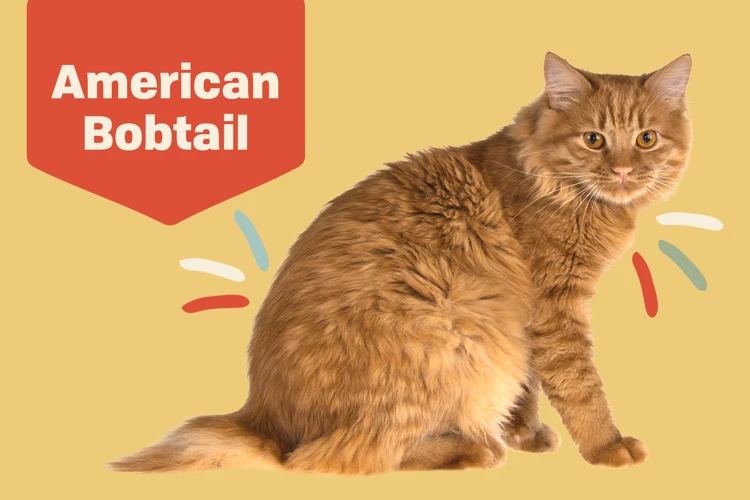
As a pet owner, it can be difficult to know when your American Bobtail’s eye problems warrant a trip to the vet. While some issues may resolve on their own, others can be indicators of serious underlying conditions. It’s important to pay close attention to your cat’s eye health and know the signs that it’s time to schedule an appointment with your veterinarian. In this section, we’ll cover the most common eye problems in American Bobtails and when to seek professional help.
Excessive Tearing or Discharge
Excessive tearing or discharge from your American Bobtail’s eyes is a sign of a potential eye problem. This can be caused by various factors, such as allergies or an infection. Keep an eye out for the following symptoms:
- Excessive watering – This is when your cat’s eyes produce an abnormally large amount of tears or watery discharge. This can lead to tear-stained fur and a moist chin, indicating that something is irritating their eyes.
- Yellow or green discharge – Discharge from your cat’s eyes can vary in color and texture. If your cat’s eyes are producing yellow or green discharge, it could indicate an infection.
- Cloudy or hazy eyes – This is a sign of a potential corneal ulcer or cataract. If your cat’s eyes seem cloudy or hazy, it’s important to have them checked by a veterinarian.
- Red or inflamed eyes – Inflammation in and around the eye can indicate a variety of eye problems. Red or inflamed eyes may be a sign of conjunctivitis or uveitis.
- Squinting or rubbing their eyes – If your cat is squinting or rubbing their eyes excessively, it’s a sign that their eyes could be irritated or painful. This could be caused by glaucoma or a foreign object in their eye.
If you notice any of these symptoms in your American Bobtail, it’s important to schedule an appointment with your veterinarian as soon as possible. Eye problems can progress quickly and cause permanent damage if left untreated. Your vet will be able to diagnose the problem and provide appropriate treatment to prevent further complications.
Redness or Swelling
One of the most common signs that your American Bobtail may have an eye problem is redness or swelling. If you notice your cat’s eye appears more red than usual or if the area around the eye is swollen, it’s important to schedule an appointment with your vet. This may be a sign of several conditions, such as conjunctivitis or uveitis, that require prompt treatment.
Here are some other signs to look out for that may accompany redness and swelling of the eye:
- Tearing or Discharge: If your cat’s eye is producing more tears or discharge than usual, this can be a sign of an infection.
- Squinting or Blinking: Your cat may squint or blink excessively if its eye is painful or uncomfortable.
- Changes in Vision: As the eye becomes inflamed or swollen, your cat may experience changes in their vision, such as blurry or hazy vision.
- Behavioral Changes: Your cat may also become more irritable or lethargic if they are experiencing discomfort or pain in their eye.
It’s important to monitor your American Bobtail’s behavior and habits closely and to seek out veterinary care if you suspect an eye issue. Ignoring these symptoms can lead to worsening conditions that could potentially lead to permanent vision loss or other complications.
During your visit to the vet, they will examine your cat’s eye(s) and determine the underlying issue. They may perform tests such as a fluorescein stain to check for corneal ulcers or intraocular pressure tests to check for signs of glaucoma. Treatment options will depend on the severity of the condition and may include medications, eye drops, or surgery.
Remember that prevention is key when it comes to eye problems in American Bobtails. Maintaining good grooming habits, a healthy diet, and scheduling regular eye exams can help catch and prevent issues before they become severe.
Changes in Pupil Size or Appearance
One significant sign of eye problems in American Bobtails is changes in pupil size or appearance. A cat’s pupil size may change based on lighting conditions or arousal levels, so it’s essential to look out for significant or persistent changes. For example, if one pupil is noticeably smaller than the other, it could indicate a corneal ulcer or uveitis. On the other hand, dilated pupils could be a sign of glaucoma or retinal disease.
Table: Changes in Pupil Size or Appearance
| Change in Pupil Size or Appearance | Possible Eye Condition |
|---|---|
| One pupil is noticeably smaller than the other | Corneal ulcer or uveitis |
| One pupil is noticeably larger than the other | Glaucoma or retinal disease |
| Constricted pupils | Exposure to bright lights or medications |
| Dilated pupils | Low light conditions, medications, or neurological problems |
Keep in mind that changes in pupil size or appearance can occur gradually, which may make them difficult to notice. It’s vital to schedule regular eye exams for your American Bobtail to catch any potential eye problems before they worsen. If you do notice any changes in your cat’s pupils, don’t hesitate to consult with your vet as soon as possible to ensure timely and appropriate treatment.
Bumps or Sores on the Eye or Eyelids
If you notice bumps or sores on your American Bobtail’s eye or eyelids, it is crucial to schedule an appointment with your veterinarian. These may be a sign of a more serious issue, such as an infection or tumor. Your vet will perform a physical examination and may recommend biopsy of the affected area to determine the cause of the bump or sore.
Common causes of bumps or sores on the eye or eyelids include an eye infection or an allergic reaction. Eye infections can be caused by bacteria, viruses or parasites which lead to inflammation and the formation of bumps or sores. Allergic reactions can lead to bumps or sores due to irritation from the allergen.
In some cases, a bump or sore on the eye or eyelid may be a sign of a tumor or cancer, especially if the bump is slow to heal or repeatedly returns after treatment.
During your visit, your veterinarian may recommend diagnostic tests such as ultrasound or X-ray to examine the affected area further and determine the best course of treatment.
Early detection and treatment of bumps or sores on the eye or eyelid are essential for the well-being of your American Bobtail. Regular eye exams can help to detect any abnormalities and prevent any serious issues from developing.
Changes in Eye Movement or Behavior
As a pet owner, it’s important to observe your American Bobtail’s eye movement and behavior. Any changes in their eye behavior can indicate an underlying issue, and it’s important to schedule a visit to the vet right away. Here are several changes to look out for:
| Change in Eye Movement/Behavior | Possible Indication |
|---|---|
| Excessive blinking or squinting | This could indicate discomfort or pain in the eye, potentially caused by an injury or infection. It’s important to take your American Bobtail to the vet to determine the underlying problem. |
| Unusual eye movements | If your American Bobtail is experiencing eye spasms or twitching, it could indicate a neurological issue. Your vet may need to perform additional tests to rule out any underlying conditions. |
| Lack of coordination | An American Bobtail’s eye movements are tightly linked with their coordination. If you notice they are having difficulty walking or performing basic actions, this could be related to a problem with their eyes. It’s important to take your pet to see the vet to determine the underlying cause. |
| Changes in vision | Any noticeable changes in your American Bobtail’s vision could indicate an underlying eye issue. They may become hesitant to climb or jump, or become disoriented in new or familiar environments. Take your pet to the vet if you notice any changes in their vision. |
By observing your American Bobtail’s eye movement and behavior, you can catch any underlying issues before they become more severe. Always consult with your vet if you notice any changes in your pet’s vision or behavior.
What to Expect During Your Visit
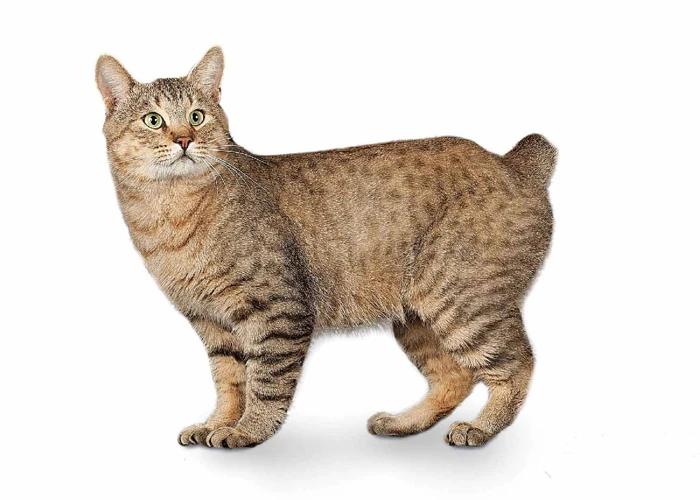
The thought of taking your American bobtail to the vet for eye problems can be daunting, but understanding what to expect during your visit can help ease any concerns. Your vet will likely perform a physical examination and run some diagnostic tests to determine the underlying cause of the eye problem. Once a diagnosis is made, they will discuss treatment options and provide recommendations for preventive measures. Let’s take a closer look at what you can expect during your visit to the vet for eye problems.
Physical Examination
During a physical examination, the vet will thoroughly examine your American Bobtail’s eyes to determine the nature and severity of any eye problems. They may use various tools such as a specialized light and magnifying glass to get a closer look at the eye structures.
The vet will look for signs of redness or inflammation, discharge or pus, cloudiness, scratches, changes in pupil size, and other abnormalities. They may also assess your cat’s eye movement and behavior to determine if they are experiencing any discomfort or pain.
Here are some steps the vet may take during a physical examination:
- Checking the moisture level of the eyes
- Inspecting the conjunctiva and eyelids for inflammation or redness
- Measuring the intraocular pressure to screen for glaucoma
- Examining the cornea and iris for scratches, scarring, or other damage
- Assessing the size and shape of the pupils, which can indicate issues with the nerves or muscles that control the eye
Based on the findings of the physical examination, the vet will determine whether additional diagnostic tests are required, and what the appropriate course of treatment is. Always make sure to ask the vet any questions you may have and voice any concerns during the physical examination, as they can provide valuable information about your American Bobtail’s eye health.
Diagnostic Tests
During your American Bobtail’s visit to the vet for eye problems, your vet may conduct various diagnostic tests to determine the underlying cause of the issue. These tests can involve a combination of observation, physical examination, and laboratory analysis. Some of the common diagnostic tests that your vet may recommend include:
- Tonometry: This test involves measuring the pressure inside your cat’s eye. Elevated eye pressure can indicate glaucoma, a serious condition that requires prompt treatment.
- Fluorescein staining: Your vet may use a special dye to check for corneal ulcers or scratches. The dye will highlight any areas of damage, making it easier for your vet to diagnose and treat the problem.
- Eye exam: During an eye exam, your vet will evaluate the structure of your cat’s eye, looking for signs of inflammation, infection, or other abnormalities. Your vet may use an ophthalmoscope to get a closer look at the internal structures of your cat’s eye.
- Blood tests: In some cases, your vet may recommend blood tests to check for underlying health conditions that could be contributing to your cat’s eye problems. For example, hyperthyroidism and diabetes can both cause eye problems in cats.
- Biopsy: If your vet suspects a tumor or other abnormal growth, they may recommend a biopsy to determine whether the growth is cancerous.
It’s important to note that the specific diagnostic tests your vet recommends will depend on your cat’s individual symptoms and health history. Your vet will work with you to develop a diagnostic plan that is tailored to your cat’s specific needs. Once the underlying cause of your cat’s eye problem has been identified, your vet can recommend appropriate treatment options to alleviate your cat’s discomfort and improve their quality of life.
Treatment Options
After diagnosing your American Bobtail’s eye problem, your veterinarian will discuss potential treatment options. The course of treatment will depend on the nature and severity of the eye problem that your cat is experiencing.
Possible treatment options include:
- Topical Medications: Eye drops or ointments can be used to treat a variety of eye problems, including infections, inflammation, and dry eye.
- Oral Medications: Some eye problems may be treated with oral medications, such as antibiotics or anti-inflammatory drugs, in addition to or instead of topical treatment.
- Surgery: In some cases, surgery may be necessary to address a more serious eye problem, such as a corneal ulcer or cataract.
- Lifestyle Changes: Your veterinarian may suggest making changes to your cat’s diet or living environment to address certain eye problems, such as allergies or tear duct blockages.
It’s important to follow your veterinarian’s treatment recommendations closely to ensure the best possible outcome for your American Bobtail’s eye health. Be prepared for follow-up visits or checkups to monitor your cat’s progress and adjust the treatment plan as needed. Remember that early detection and treatment are key to preventing further damage to your cat’s eyes and preserving his or her vision.
Preventive Measures
Taking preventive measures is an essential step in maintaining your American Bobtail’s overall health and well-being. By implementing proper care and attention, you can help prevent and manage various eye problems that may affect your pet. In this section, we will discuss some of the preventive measures that you can take to ensure your American Bobtail’s eyes remain healthy and bright. From regular eye exams to proper grooming habits and a balanced diet, these measures can help you keep your feline friend’s eyes in tip-top shape. Let’s explore these measures in more detail.
Regular Eye Exams
Regular eye exams are an essential part of maintaining the overall health and wellness of your American Bobtail. By scheduling routine checkups with your vet, you can stay ahead of any potential eye problems and prevent more serious issues from occurring. Here are some reasons why regular eye exams are necessary:
Identification of early stage eye problems: During a routine eye exam, your vet can identify any early stage eye problems before they become serious. This allows for early treatment and a better prognosis for your cat.
Evaluation of visual acuity and eye movement: Regular exams can determine your cat’s visual acuity and assess their eye movement. This can be particularly useful in identifying common eye problems such as cataracts or glaucoma.
Assessment of existing conditions: If your American Bobtail has any existing eye problems, a routine checkup allows for continued monitoring of the condition’s progression. This can ensure that any treatments or medications are working effectively.
To keep track of your cat’s eye health, it can be helpful to keep a record of their vet visits and the results of their eye exams. Here is an example table that you can use to keep track of your cat’s eye exams:
| Date | Exam Results | Treatment |
|---|---|---|
| January 1, 2021 | No issues found | N/A |
| June 15, 2021 | Conjunctivitis in left eye | Prescription eye drops |
| October 30, 2021 | Corneal ulcer in right eye | Antibiotic ointment |
By keeping track of your cat’s eye health, you can ensure that they receive the care they need and catch any potential problems early on.
Cleaning and Grooming Habits
Regular cleaning and grooming habits can play a vital role in maintaining the eye health of your American Bobtail. Here are some tips that can help you keep your cat’s eyes healthy and clean:
- Regular brushing: Brush your American Bobtail’s fur regularly to get rid of any debris or dirt that could easily find their way into their eyes. Regular brushing also helps to prevent matting or tangling of their fur, which can lead to irritation of the skin around the eyes.
- Wiping the area around the eyes: American Bobtails are known to have tear stains around the eyes, which can be irritating if not wiped away regularly. Use a damp soft cloth or a pet-safe wipe to clean the area around the eyes gently. Avoid using harsh chemicals or products that could cause irritation.
- Trimming the fur: Trim any long fur around the eyes regularly to prevent it from getting into the eyes, leading to irritation or scratches on the cornea. Be careful not to trim too close or nick the skin around the eyes.
- Bathing: Bathe your American Bobtail regularly to prevent dirt and debris from accumulating on their fur. Be gentle when bathing around the eyes and avoid getting water or soap in the eyes.
- Observation: Regularly monitor your American Bobtail’s eyes for any signs of irritation, redness, or discharge, which could indicate underlying eye problems. Prompt action can prevent minor issues from becoming severe and potentially leading to blindness.
By practicing these basic grooming habits regularly, you can maintain the eye health of your American Bobtail and minimize the risk of eye problems.
Diet and Nutrition
Maintaining a healthy diet and proper nutrition is crucial for the overall health and wellbeing of your American Bobtail, including their eye health. A well-balanced diet can help prevent several eye problems in cats, such as cataracts and glaucoma. Here are some essential nutrients that should be included in your American Bobtail’s diet for maintaining healthy eyes:
| Nutrient | Benefits | Food Sources |
|---|---|---|
| Vitamin A | Improves vision, prevents night blindness and dry eyes | Liver, fish oil, eggs, sweet potato, spinach |
| Omega-3 Fatty Acids | Reduce inflammation, improve eye health and prevent dry eyes | Fish oil, salmon, sardines, herring, tuna, flaxseed |
| Lutein and Zeaxanthin | Prevent macular degeneration and cataracts | Kale, spinach, broccoli, peas, corn |
| Vitamin C | Prevents cataracts and promotes healthy eye blood vessels | Oranges, kiwi, broccoli, strawberries, bell peppers |
It is important to note that while it is essential to provide your American Bobtail with a balanced diet rich in essential nutrients, overfeeding them can lead to obesity and other health problems. It is crucial to consult with your veterinarian to determine the appropriate amount and type of food for your feline friend. Additionally, always make sure that your American Bobtail has access to fresh water to maintain proper hydration.
Incorporating nutrient-rich foods and supplements into your American Bobtail’s diet can help promote healthy eyes and prevent eye problems. However, your veterinarian should be consulted before making any significant changes to your cat’s diet.
Conclusion
In conclusion, the eyes of American Bobtails are as unique and beautiful as the rest of their features, and any changes in their eyes should be taken seriously. As a responsible pet owner, it is important to keep an eye on your cat’s behavior and habits, as well as their physical appearance. If you notice any signs of eye problems, including excessive tearing or discharge, redness or swelling, changes in pupil size or appearance, bumps or sores on the eye or eyelids, or changes in eye movement or behavior, it is crucial to schedule an appointment with your vet as soon as possible.
During your visit, you can expect your vet to conduct a thorough physical examination and order diagnostic tests to determine the underlying cause of the eye problem. This will be followed by an appropriate treatment plan, which may include medication or other recommended measures.
Furthermore, as prevention is better than cure, it is important to take certain preventive measures to ensure your American Bobtail’s eye health. This includes scheduling regular eye exams, following proper cleaning and grooming habits, and providing a balanced and nutritious diet.
By following these measures and being vigilant towards any changes in your cat’s eye health, you can ensure a better quality of life for your furry companion. Ultimately, keeping your American Bobtail healthy and happy is the key to a long and enjoyable relationship between you and your beloved pet.
Frequently Asked Questions
1. Can all eye problems in American Bobtails be treated?
Not all eye problems in American Bobtails can be fully treated, but early diagnosis and treatment can help manage the condition and prevent it from worsening.
2. Is excessive tearing normal for American Bobtails?
No, excessive tearing is not normal for American Bobtails and can be a sign of an underlying eye problem that should be examined by a veterinarian.
3. Can American Bobtails with eye problems still lead a normal life?
American Bobtails with eye problems can still lead a relatively normal life, but it’s important to manage the condition to prevent discomfort and potential complications.
4. Can American Bobtails with eye problems still breed?
It’s best to avoid breeding American Bobtails with certain inheritable eye conditions, but your veterinarian can advise on an individual basis.
5. How often should American Bobtails have their eyes examined by a vet?
American Bobtails should have their eyes examined by a veterinarian at least once a year, or more frequently if there are any concerning symptoms.
6. Can certain foods or supplements prevent eye problems in American Bobtails?
A balanced and nutritious diet can help support overall health, including eye health, but it’s not a guarantee against eye problems in American Bobtails.
7. Can American Bobtails with chronic eye conditions still be adopted?
American Bobtails with chronic eye conditions can still be adopted, but potential adopters should be prepared for ongoing management and treatment of the condition.
8. Are all eye drops safe for American Bobtails?
No, not all eye drops are safe for American Bobtails, and it’s important to consult with a veterinarian before administering any medication to your cat’s eyes.
9. Can American Bobtails with eye problems still go outside?
American Bobtails with eye problems can still go outside, but it’s important to protect their eyes from sunlight, wind, and debris.
10. Can eye infections in American Bobtails be contagious to other pets or humans?
Some eye infections in American Bobtails can be contagious to other pets or humans, so it’s important to practice good hygiene and consult with a veterinarian for proper treatment.

